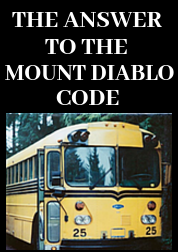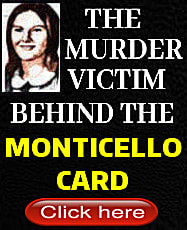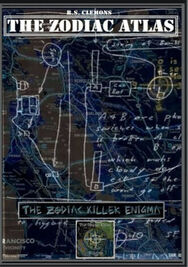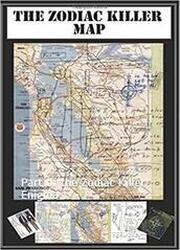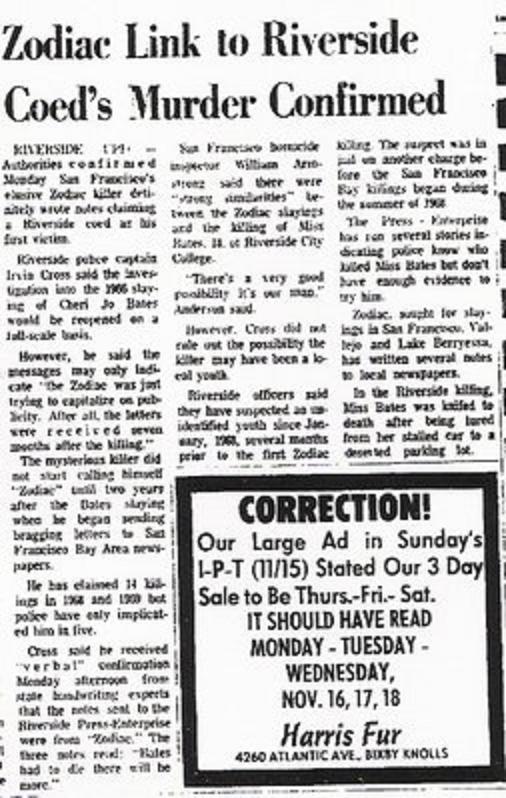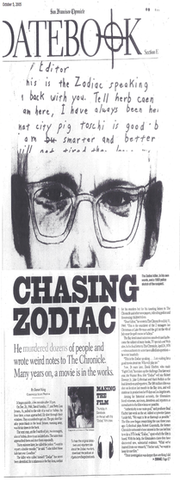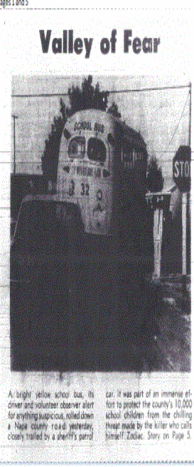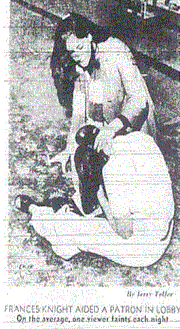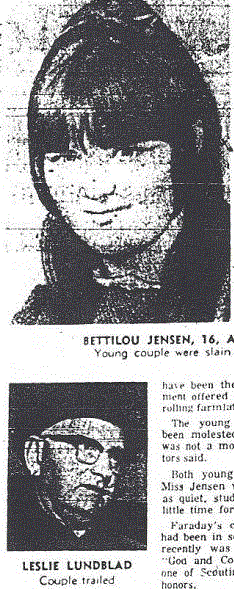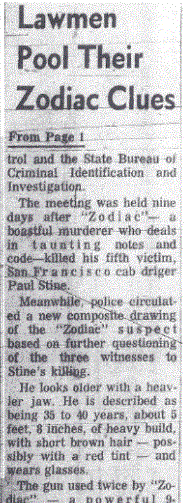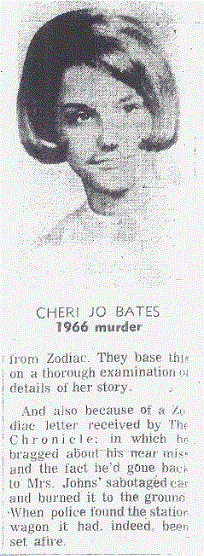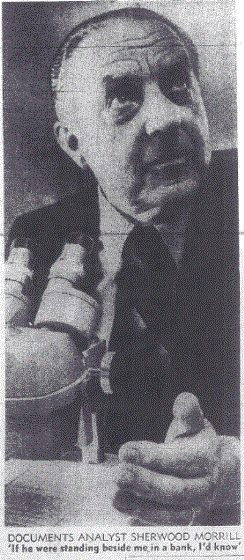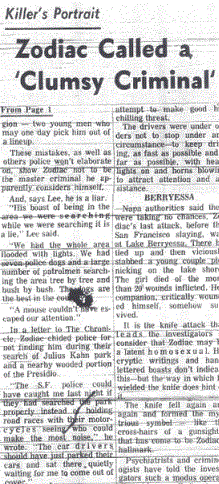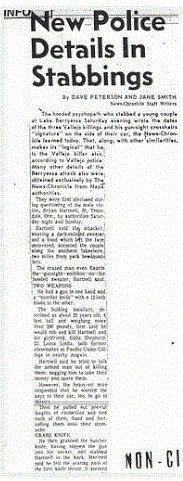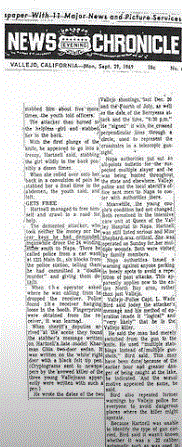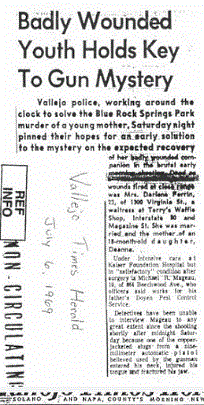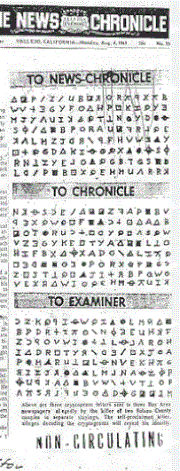In the late hours of December 20th 1968, David Faraday and Betty Lou Jensen would be gunned down by a merciless killer. Two important eyewitness timelines, that of Stella Borges and James Owen would indicate the murders most probably occurred sometime between 11.14 pm and 11.20 pm, but based on the statement of Stella Borges it was determined that the Zodiac Killer in all likelihood exited the turnout east, in the direction of Benicia. She was heading from Vallejo to Benicia and reported passing no vehicles en route. The crime was late at night, may have been the Zodiac Killer's first murders, he had fired off at least 10 rounds, and as a result of the close contact wound to David Faraday's head, quite possibly had received blood transference to his clothing. Although not wholly conclusive, his logical choice after leaving the turnout would have been to head home and relative safety, not drive in the opposite direction. This is what he appeared to do, heading in the direction of Benicia.

The Zodiac Killer appeared to show extreme caution and patience between the first two crimes, or was there more to it? Had the extensive investigation that followed the Lake Herman Road double murder, driven the murderer of the young couple into the shadows, with the buffer zone he had created from his home location unnecessarily close? He was seemingly determined never to make the same mistake again, by taking his crimes well away from the Benicia area.

However, it was not the phone call, but his first communications by letter that may have revealed the most. A trinity of letters arrived on July 31st 1969 to three newspapers, containing three portions of a cryptogram. In the San Francisco Chronicle letter he wrote "This is the murderer of the 2 teenagers last Christmass at Lake Herman + the girl on the 4th of July near the golf course in Vallejo". The Zodiac Killer mentioned both Lake Herman Road and Vallejo in these communications, but failed to mention Benicia in any.
On the morning of August 4th 1969 the 'Debut of Zodiac' letter arrived at the San Francisco Examiner, in which the Zodiac Killer mentions Vallejo a further three times, writing "In answer to your asking for more details about the good times I have had in Vallejo, I shall be very happy to supply even more material", then "I did not leave the cene of the killing with squealling tires + raceing engine as described in the Vallejo paper", and finally "I was in this phone booth having some fun with the Vallejo cop". But it was the extension of this line that would spike the interest "The man who told police that my car was brown was a negro about 40-45 rather shabbly dressed. I was in this phone booth having some fun with the Vallejo cop when he was walking by. When I hung the phone up the damn thing began to ring & that drew his attention to me + my car". Not only does the author of the letter instill Vallejo into our minds, he effectively gives up the color of his car, even though there was no mention of a negro eyewitness in the police report or newspapers - unless of course, the word 'negro' is not the important part of the phrase he wants us to notice - but the claim his 'car was brown'. The author then unnecessarily uses the word car once again when he writes "When I hung the phone up the damn thing began to ring & that drew his attention to me + my car". He could easily have wrote "When I hung the phone up the damn thing began to ring & that drew his attention to me", but he doesn't. Twice he mentions the word car and on both occasions it was totally unnecessary, even forfeiting the color of the car for good measure.
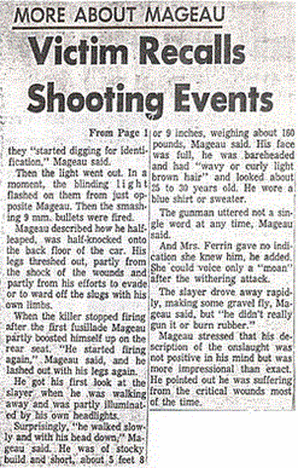
In the aftermath of the Lake Herman Road murders there was no need for deception, because the police were pursuing lines of inquiry that focused on family, friends and jealous suitors, which was effectively taking them further away from the notion of a 'serial killer', and probably the reason why the Zodiac Killer stayed quiet for nearly seven months.
We now have to consider the timing of the phone call at 12:40 am on July 5th 1969. If the killer at Blue Rock Springs Park had driven straight to the payphone at Springs Road and Tuolumne Street, he could have made the call as early as 12:10 am, so what did he do during this unaccounted period of time? A journey to Benicia (or slightly beyond), with approximately 10 minutes to get changed, clean up and dispose of the weapon, then head back to the payphone, would take approximately 40 minutes in total. Because of the narrow window of time between the eyewitness testimony of Stella Borges and James Owen as they passed the Lake Herman Road turnout, it would suggest that Benicia was the area he headed toward after the murders of David Faraday and Betty Lou Jensen - and an area that is never mentioned once in any of his communications, despite committing his first attack there.
Then came the 'Bus Bomb' letter on November 9th 1969, describing his escape after the murder of Paul Stine in Presidio Heights on October 11th 1969, going into great detail of how he outwitted the police. However, he couldn't resist dropping us some breadcrumbs one more time: "To prove that I am the Zodiac, Ask the Vallejo cop about my electric gun sight which I used to start my collecting of slaves". Yes, ask the Vallejo cop about the electric gun sight you used in Benicia, an area you would always fail to mention.




 RSS Feed
RSS Feed

